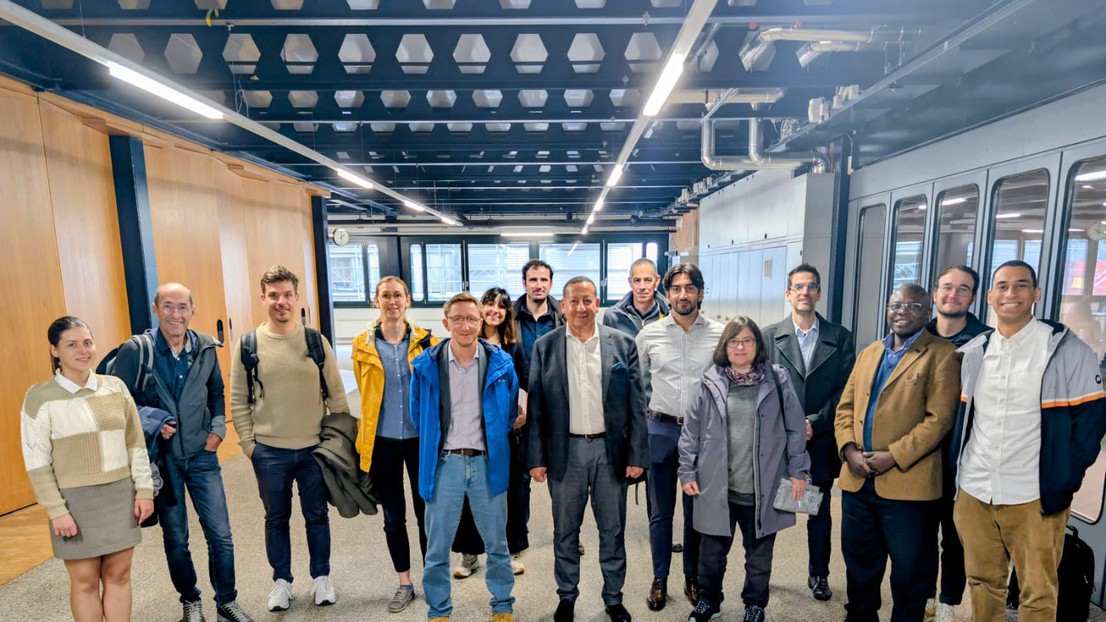LMS and PSI Join Forces to Advance Nuclear Waste Repository Research

Members of LMS and PSI gather at EPFL for a scientific exchange, sharing expertise on nuclear waste repositories. © 2025 EPFL
Two leading Swiss institutions align their strengths to tackle one of the country's most critical environmental challenges.
A new scientific dialogue is emerging between two of Switzerland's leading research institutions in the field of nuclear waste management. On 26 September, the Laboratory of Soil Mechanics (LMS) at EPFL hosted a delegation from the Paul Scherrer Institute's Laboratory for Waste Management (LES-PSI), opening discussions on future collaboration to address the long-term safety of deep geological repositories.
At the heart of the exchange is a shared ambition: to better understand the coupled mechanical and chemical behaviors of bentonite-based barrier systems, which play a critical role in the containment of high-level radioactive waste. By combining PSI's expertise in chemical diffusion and reactive transport in clays with LMS's leadership in the hydro-mechanical behavior of soils, the partnership aims to unlock new insights into the performance of engineered barriers under complex, long-term conditions.
A complementary approach to a common challenge
Switzerland's strategy for deep geological disposal relies on multi-barrier systems that isolate waste from the biosphere for tens of thousands of years. Ensuring their reliability requires a fundamental understanding of the interactions between porewater chemistry, solute transport, and the mechanical evolution of clay-based materials.
LMS researchers presented ongoing work on swelling pressures, water retention and chemo-mechanical coupling in compacted bentonite. PSI colleagues contributed their deep experience in chemical diffusion and the modeling of reactive transport processes. Together, the discussions pointed to clear complementarities between the two institutions—both in experimental methods and in conceptual modeling frameworks.
Toward integrated science for long-term safety
The visit marks an important step toward building a collaborative research axis that reflects the complexity of real-world repository environments. By bringing together chemical and mechanical expertise within a Swiss context, the institutions are setting the stage for more comprehensive models that could inform repository design, safety assessment and long-term monitoring strategies.
“We're looking at the same material from different perspectives,” said Prof. Lyesse Laloui, director of LMS. “PSI focuses on how solutes and chemical gradients evolve in bentonite; we focus on how those processes influence mechanical behavior. Together, we can move closer to predictive models that account for the full range of coupled phenomena.”
Swiss excellence, global relevance
While the collaboration is rooted in the Swiss research landscape, its potential impact reaches far beyond national borders. Countries around the world are working to develop safe, long-term solutions for radioactive waste disposal. As one of the few initiatives actively integrating chemical and mechanical insights in the context of clay-based barriers, the LMS–PSI partnership could help set new standards for science-based repository design.
The visit concluded with a tour of LMS's advanced experimental facilities and an open discussion on how these complementary competencies—chemical and mechanical—might be brought together in future research efforts. Identifying concrete pathways to combine these skill sets will be essential to tackling the complex challenges posed by deep geological repositories.